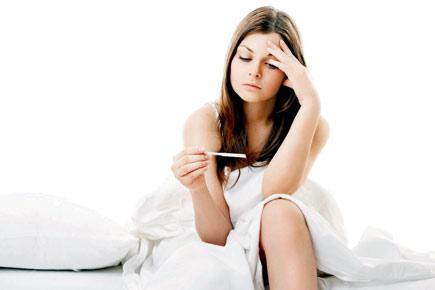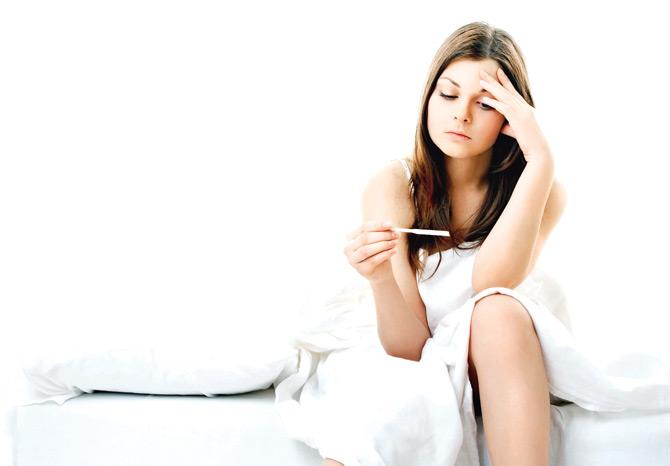Polycystic Ovarian Syndrome (PCOS) is the most common hormonal disorder in women of reproductive age. It can put those affected at risk for serious health conditions including high blood pressure, heart disease and diabetes.

Polycystic Ovarian Syndrome (PCOS) is the most common hormonal disorder in women of reproductive age. It can put those affected at risk for serious health conditions including high blood pressure, heart disease and diabetes. PCOS can also cause infertility, a loss of hair on the scalp, excess body hair, acne and weight gain. The disorder affects between 7 and 10 percent of women of childbearing age.
ADVERTISEMENT

Representational picture
Genetic disorder, stress prescription drugs, higher than normal levels of male hormones in the body or a combination of various factors may have thick growth over lower face, chest and abdominal midriff are often symptoms of PCOS which also make a good target for the laser. However, as this growth is under hormonal influence, growth may resurge even after optimum results are achieved at times of hormonal surges like pregnancy and lactation or if the PCOS is left uncorrected. The excess growth of hair on the neck, chin, upper lips, cheeks or forehead can be frustrating and embarrassing – calling for a medical intervention or surgery like laser treatment, bleaching, waxing or shaving. So a word of advice, LHR is a must for PCOS related hair growth; otherwise called hirsutism.
The data shows almost 80-100% of hair removal is achieved which practically means hairless skin. This is permanent; however a maintenance session after 9 months to a year is recommended as that as your hormones changes throughout a life, a little hair can return, hence the need for maintenance.
Dr Deepika Shetty, Dermatologist, Skin Clinic, says, “Primelease HR treatment brings in unique triple wave combination which provides best results in all type of skin. It is virtually pain free hair reduction for all skin types. It works on fine and residual hair, as well as for pale phototypes.”
Dermatologist and Founder, Lumiere Dermatology says, "Laser hair removal treatment has a minimal side effect such as little redness, few pimples or sometime folliculitis which is curable. Rarely a tiny scab may form where a hair is particularly difficult to treat, but that falls off and resolves within a few days."
Here are some instructions for pre treatment
>> No tanning or self tanning of the skin before, immediately after or between treatments. Tanned skin may absorb a portion of the energy that should be striking the hair follicle, resulting in pigmentation problems and a less effective treatment
>> Moisturise daily the areas that are being treated since dry skin may be more sensitive
>> Avoid any products on the day of treatment on the area to be treated
>> No waxing, tweezing or electrolysis treatments on areas to be treated, you can shave or clip hair
>> Do not take Isotretinoin
>> If you start a course of antibiotics, you cannot have a laser treatment while on the antibiotics and for a week afterwards.
Precautions post-treatment:
>> Apply sunscreen as the most important precautionary measure after the treatment to avoid tanning and sun sensitivity
>> No exercising or working out for a minimum of 12 hours (if area is still red after 12 hours, wait until as redness has subsided)
>> No saunas, hot tubs or hot showers for a minimum of 12 hours (if area is still red after 12 hours, wait until as redness has subsided)
>> Avoid any other activity that will cause sweating for at least 12 hours
>> Apply a cold, wet compress to treated areas several times a day if redness or irritation is bother some
>> It's not recommended for pregnant women and lactating mothers
 Subscribe today by clicking the link and stay updated with the latest news!" Click here!
Subscribe today by clicking the link and stay updated with the latest news!" Click here!






